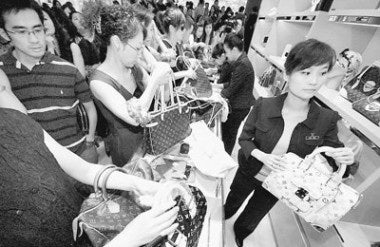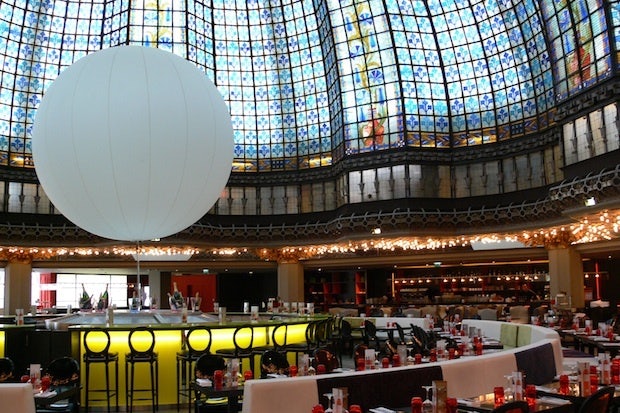Price Tags Remain Significantly Higher In China, Despite Rising Yuan#

The yawning price gap between luxury goods sold in China and Europe has hit record highs, turning into quite the chronic headache for Chinese shoppers and luxury-good purveyors alike. With stiff luxury tariffs and a slew of additional taxes slapped on imported high-end items, luxury goods sold in China can cost upwards of 30-50 percent more than those sold in Europe, an issue that has, in recent years, led Chinese consumers to look abroad to buy their coveted brands, meaning more than half of all such purchases by these shoppers were made outside of China in 2011. Over the past year, even as some Chinese luxury consumers have cut back on their lavish spending in the face of slower macroeconomic growth (and a lull in conspicuous consumption), the price gap has only intensified. Factor in the euro’s depreciating value -- recently dropping 16 percent against the yuan -- and top-tier brands are stuck straddling an even wider gap.
For one of Louis Vuitton's most iconic accessories, the popular Speedy 30 bag, customers at stores in Beijing or Shanghai will pay 6,100 yuan ($964), while the price tags in Europe is 500, or about $619.
Likewise for Chanel's Timeless Classic Flap bag, which in France retails at €3,100, or $3,839. In China, shoppers must spend 37,000 yuan, or about $5,850, for the same article.
As the oft-repeated rumors of any significant luxury tax reduction in China still remain highly speculative, many companies are looking to address the issue on the European side, debating the idea of a price increase on goods sold in the homeland. (The second such increase in the past several months.) As one Prada spokesman told the WSJ, "In order to reduce the price gap with China, the company may consider increasing prices as much as 10 percent in Europe if the euro continues to stay so weak, of course without increasing prices in China."

However, increasing prices on the Western front -- while indeed narrowing the gap between Europe and China -- may have little, or worse yet, detrimental effects on these luxury giants in general. As luxury-goods powerhouse LVMH Moët Hennessy Louis Vuitton SA, which has expanded the China footprints of many of its flagship brands massively in the past several years, recently noted in a release, "business in China is now suffering.” With Beijing moving at a snail's pace to enact any significant reduction in import and consumption taxes -- according to one source, a tug-of-war between the Ministries of Finance and Commerce is to blame -- many luxury brands are finding sales disappointingly low to offset their significant investments in the country. (Particularly when compared to more developed markets like Europe and North America, or duty-free destinations like Hong Kong or Macau.)
Considering mainland Chinese constitute a large portion of overseas sales, hiking up prices seems to not only leave China’s nose-bleed ticket prices unresolved, but threatens the European market as well. Chinese tourists traveling to Europe in good faith that their favorite luxury items will be sold at more affordable prices could be discouraged from returning if the price gap is mitigated solely by price increases.
Moreover, increasing prices in Europe could undermine purchases by domestic consumers as eurozone gloom continues to weigh on spending. Aaron Fischer, analyst at CLSA Asia-Pacific Markets warned that although "Chinese consumers likely will continue to flock overseas for their big buys, as luxury makers wouldn't likely increase prices by more than 5 percent to 10 percent….they may end up buying less." Seeming to confirm this point, a Chinese tourist in Paris in the line outside one a Chanel boutique said, "If prices were to rise in Europe, I would definitely cut back on my spending."
It seems then these coveted high-end brands will continue to be caught between a rock and a hard place in terms of pricing, at least until Europe’s economy bounces back or progress is made on China’s tax polices. For now, luxury brands may want to focus their energy on pinpointing Chinese shopping habits. While some testimonials admit that inflated prices abroad may change their minds about booking their next shopping spree, the more prevalent consensus seems to be that the Chinese won’t change their shopping habits in any dramatic way, but that many will just bite the bullet and make the purchase. Even if prices rise 10 percent in Europe for that Chanel handbag or Hermes scarf, they're still less pricey than they'd be in Beijing. Those who have the proclivity to shop domestically in China will continue to do so, and those who venture abroad won’t necessarily be making last minute cancellations on account of potentially higher prices.
Knowing that China is in the midst of a growth spurt -- albeit a less extreme one than in recent years -- companies may want to reconsider how they can optimize sales in destinations that Chinese shoppers will definitely frequent until a mature balance is struck between European and Chinese prices. This, of course, may not include increasing sale prices, but rather heightening the brand value through promotions, events, and more evocative marketing strategies.
